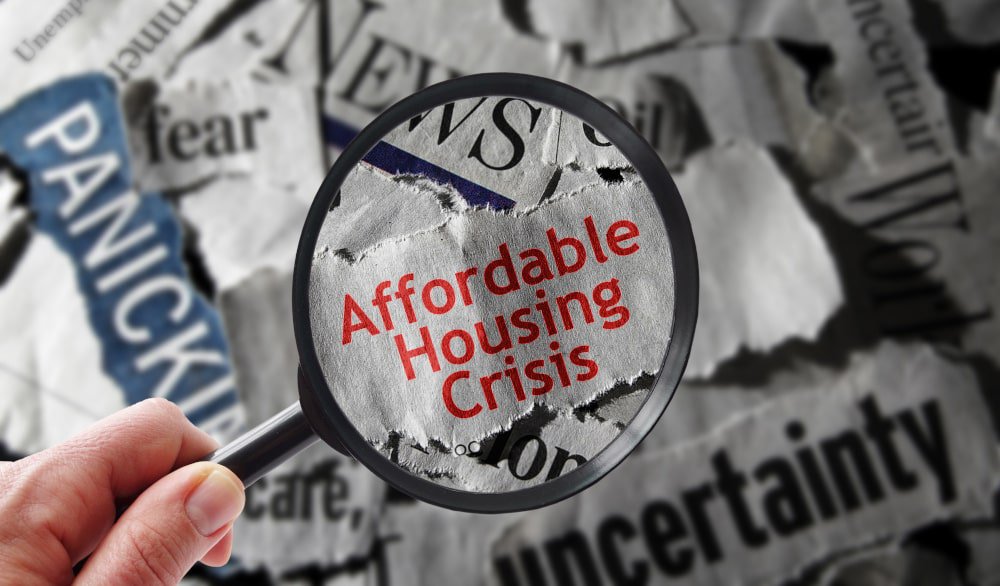Why Is Housing In Canada So Unaffordable?

Homeownership has represented both stability and financial security for all Canadians over the past several generations. However, macroeconomic factors, politics, and other facets of society have increased the barrier for Many Canadians to achieve their goal of owning a house for an affordable price. Canada faces a growing problem of unaffordable housing, given premium prices for a house, delayed policy implementation, and the rising cost of living. Beyond these effects, what are the root causes?
The Economic and Policy Landscape
Canadian housing affordability mainly results from established economic decisions together with established policy frameworks. Residential property values skyrocketed into unbalanced territory compared to employee salary increases throughout the last ten years. The national average home price stated by CREA reached $735,200 in February 2025 after increasing by 76% from the starting point of $417,000 in 2015. Despite this period, Statistics Canada reports that median household income after tax increased by just 17% while home prices soared drastically beyond this level, creating an income-price gap.
The pandemic further complicated matters. The Bank of Canada initiated its first-ever reduction of the overnight lending rate to 0.25% during 2020, which resulted in a sudden expansion of home buying activities. The low-interest mortgage rates provided Canadians with an opportunity to purchase homes as the excessive housing demand surpassed the market supply. In addition, the lending rate rose to 5.00% during 2024, affecting homeowners through payments increasing between thirty to fifty percent of the original amount, based on the size of the mortgage principal and amortization length. Affordability levels declined in every province due to high inflation and stagnant wages together with the market shift.
Executive institutions put their efforts into providing temporary benefits to home buyers without implementing permanent institutional changes. The temporary housing assistance programs and tax incentive programs created limited buyer advantages though they failed to speed up new home construction rates. Slow zonal development implementation combined with insufficient national housing coordination by the government became major obstacles to progress throughout the last ten years. The fragmented decision-making approach pursued by provinces and municipalities hinders the effective solution of supply-related challenges .
Immigration’s Role in the Affordability Crisis
Canada relies on its substantial immigration goals to secure long-term employment market success with stable population growth. The short-lived impact of high immigration numbers has brought fresh obstacles to the housing market structure. The Immigration, Refugees and Citizenship Canada (IRCC) reports that Canada approved admission to 1.23 million new residents who included permanent residents and temporary workers and international students during 2023.
The high numbers of new immigrants chose to live in Toronto and Vancouver together with Montreal and Calgary which already dealt with substantial housing challenges. The population growth immediately raised rental and ownership market demand but building supply did not keep up. Migration generates economic value but simultaneously worsens unpayable housing prices unless properly matched with construction of new housing spaces.
The Canadian government created an overseas buyer restriction that blocked international residents from buying homes across the 2023-2027 period. The implemented policy failed to solve the market demand problem completely. Records gathered by CMHC reveal that foreign buyers purchased homes at a minimal rate, which totaled below 4% in 2022. Most housing market demand emerges from Canadian homebuyers, along with those who immigrate to Canada, and not from foreign buyers investing speculatively.
Insufficient housing construction remains the core challenge because immigration itself does not represent the fundamental problem. The shortage of new housing units along with inadequate services allows population influx to exceed residential capacity which results in sustained difficulties for affordability.
Housing Scarcity, Risk, and Development Constraints
The regulatory hurdles, along with zoning rules, present substantial barriers that restrict Canadian urban areas from expanding their housing development. The urban areas of Toronto and Vancouver maintain 70% of their residential real estate designated for single-family properties. Zoning regulations limit the possibility of building high-density developments, which would help solve housing shortages.
The process of developing residential properties becomes riskier when developers obtain land since they remain susceptible to substantial uncertainty. From rising interest rates to unstable construction expenses alongside lengthy permitting procedures and insufficient project incentives, developers avoid starting substantial residential developments. Major city builders must endure prolonged 12-24 month waits for building permits that extend construction schedules while raising their capital costs.
The Canadian Mortgage and Housing Corporation asserts that Canada faces a challenge of developing 5.8 million new homes by 2030 to maintain housing affordability. In 2023 the completion of new units reached 241,000 units but fell short of the required annual amount by half. The ongoing shortage of affordable housing will persist unless zoning gets reformed at the same speed as approval processes reach full speed. The current real estate market condemns realtors by increasing properties costs while buyer competition struggles against restricted property inventories.
These structural barriers prevent homes from becoming affordable, particularly for people buying their first house and middle-income household earners. Scarcity leads the housing market to increase prices and create a situation where needy applicants have limited viable alternatives.
Housing and Mortgage Affordability Trends
| Year | Avg. Home Price (CREA) | Variable Rate (BoC) | Monthly Mortgage (Assume $600k loan) | Deferral Requests (% of Mortgages) |
|---|---|---|---|---|
| 2016 | $478,000 | 2.10% | $2,270 | 2.1% |
| 2020 | $607,000 | 1.75% | $2,070 | 3.2% |
| 2023 | $716,000 | 4.25 | $2,930 | 7.9% |
| 2025* | $745,000 | 5.80% | $3,450 | 13.4% |
“ The property market shows an increasing discrepancy between homeowners' first purchase expectations and current mortgage conditions. A fundamental change in this situation requires budget reassurances along with financial arrangement examination, along with prospective home strategy analysis.”
— Steven Crowe, Commercial Mortgage Agent Level 2 at Clover Mortgage
Conclusion
The Canadian housing crisis emerges from three main causes which include economic factors and population growth alongside government rules and control. The housing supply remains lower than market demand, yet attempts to reduce housing costs have produced scattered results.
The housing market interest rates have skyrocketed more than three times since 2020, causing mortgage payments to increase significantly, along with revealing fundamental institutional problems in urban development systems. Economic growth from immigration creates additional stress on the already weak infrastructure. Real estate prices in Canada will persist as unaffordable unless development speeds up and zoning reforms occur, together with infrastructure coordination.
These circumstances require Canadians to obtain clear financial advice and adaptable mortgage choices, and practical budgeting techniques as they manage their circumstances. Contact us at today at Clover Mortgage to seek professional guidance to navigate economic adversity and the best mortgage solutions.
FAQs
Why is housing so expensive in Canada right now?
Housing prices have risen because demand remains high while supply remains limited, interest rates have increased, and zoning regulations exist. The daily mortgage obligations of the majority of house buyers today far exceed levels from five years ago.
Why are houses unaffordable in Canada?
The price of houses rose more than 70% during the last decade yet worker wages increased only 17%. The recent interest rate hikes started in 2022 and contributed hundreds or thousands to monthly mortgage expenses.
Will housing ever be affordable again in Canada?
Affordability will come back when the construction of more housing units meets with enduring low interest rates. The necessary policy reforms and infrastructure and construction investments constitute a requirement for achieving affordable housing.
Why is the cost of living in Canada so high?
Canadian residents deal with elevated prices that affect their expenses on housing, along with food purchases and transportation expenses and utility bills, and insurance premiums. The inflation rate experienced 14% growth between 2020 and 202,4, which has resulted in financial burdens for Canadians.





